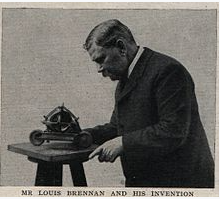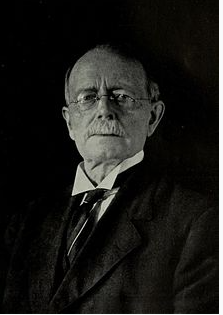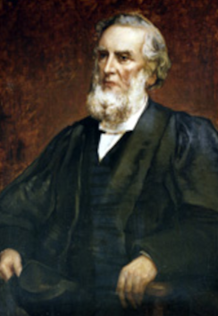Irish Scientists and Inventors
Throughout the centuries, Ireland has proven itself as a nation of inventors with many of its natives having made important contributions to their particular fields of endeavour. Outlined below is a selection of just some of the many Irish contributors to the world of science and innovation.
Barry, Vincent (1908 - 1975) Cork man Vincent Barry led a medical research team that discovered a compound (B663) that ultimately led to a treatment for leprosy. The team were working on a cure for tuberculosis at the time.

Beaufort, Sir Francis (1774 - 1857) In 1805 Navan man, Sir Francis Beaufort, conceived the wind force scale that now bears his name. A distinguished naval commander, Sir Francis' 13-point 'Beaufort Scale' was adopted by the British navy in 1838.

Boyle, Robert (1627 - 1691) Robert Boyle, one of the original modern chemists, made many key contributions in the scientific revolution of the 1600's. His most famous discovery, which examined the pressure-volume relationship in laboratory conditions, now bears his name (Boyle's Law) and was to prove fundamental to our understanding of gases and atmospheric pressure.

Brennan, Louis (1852 - 1932) From, Castlebar, Co. Mayo, inventor of the world's first guided missile - a torpedo like device which was used as an early coastal defence mechanism. Brennan also designed a monorail and helicopter.

Bull, Lucien (1876 - 1972) Prolific Dublin innovator responsible for pioneering high speed photography in order to view images in slow motion. Bull also patented an improved version of the electrocardiogram (ECG) in 1938.

Callan, Rev. Nicholas (1799 - 1864) Born in Dromiskin, Co. Louth, Rev. Callan invented both the induction coil (1836) and the self exacting dynamo (1838), both of which are still being used today.

Clerke, Agnes (1842 - 1907) Clerke, a Skibbereen woman, was a prolific astronomical writer whose esteemed reputation earned her the distinction of having a crater on the moon named after her in 1881 - Clerke Crater, at the edge of the sea of Serenity.

Coffey, Aeneas (1780 - 1852) Dublin man Aeneas Coffey invented the world's first heat-exchange device in 1830. Coffey's patent was a very efficient apparatus that led to many advances in whiskey distilling.

Collis, Robert (1900 - 1975) Dublin doctor who pioneered the technique for feeding premature infants via a nasal tube as opposed to spoon feeding. He also invented a simple, but affordable incubator for premature infants.

Davidson, Sir Samuel (1846 - 1921) Belfast's Sir Samuel Davidson was accredited with many inventions such as tea-drying equipment, the forward bladed centrifugal fan and even a hand held Howitzer gun.

Dixon, Henry Horatio (1869 - 1953) Dublin native who was the first person to explain how sap was pulled from the roots of tall trees, as opposed to being pumped from the roots - which was commonly and incorrectly believed at the time.

Drumm, Dr. James (1896 - 1974) County Down man, Dr. James Drumm invented the nickel-zinc rechargeable battery in 1930. Having been successfully tested on a train in 1931, Drumm's traction batteries had many advantages over their predecessors - especially their ability to discharge and recharge rapidly.

Fitzgerald, George Francis (1851 - 1901) A physics professor at TCD, he was the first person to suggest the possibility of producing radio waves in laboratory conditions - his theory was successfully tested in 1888 by Heinrich.

Ferguson, Harry (1884 - 1960)Nicknamed the 'mad mechanic', Harry Ferguson designed and built a new plough which was coupled to the tractor in three-point linkage, so that both formed a single unit. This Ferguson System, patented in 1926, was to revolutionise farming. Ferguson also designed and built his own motor cycle, racing car and plane - becoming the first Irish man to fly in 1909.

Geoghegan, Samuel (1844 - 1928) born in Dublin, was a draughtsman and mechanical engineer and employed in the Guinness Brewery. He designed several small steam locomotive engines to work the narrow gauge track he designed and had built within the confines of the St. James's Gate premises. He also designed special unique convertor wagons which allowed the narrow gauge locomotives to travel on the broad gauge railway adjacent to the brewery premises.

Gregg, John Robert (1868 - 1948) Monaghan man who invented the shorthand system of speed writing in 1888. The Gregg system modelled the mechanics and positioning of traditional writing and was later adapted to several languages.

Hamilton, William Rowan (1805 - 1865) Irish mathematician (and child prodigy) who made many important contributions to the world of mathematics such as predicting conical infraction in biaxial crystals, extending the least action principle, and developing the theory of quaternions which was later found to have important applications in quantum physics and mechanics.

Holland, John Phillip (1841-1914) Liscannor man, John Phillips Holland, is accredited with launching the world's first successful submarine, the 'Fenian Ram', in 1881. He also invented a mechanism for submariners to evacuate their sinking vessel.

Jellet, Rev, John (1817-1888) From Cashel, Co. Tipperary, Rev. Jellet invented an instrument, which he called a saccharimeter, to measure the sugar content of liquids using polarised light.

Joly, John (1857 - 1933) A native of Hollywood, Co. Offaly, John Joly lays claim to many inventions including: the meldometer for measuring the melting points of minerals, the steam calorimeter for measuring specific heats, and the photometer for measuring light intensity. He also co-pioneered the use of radiation for cancer treatment, and was responsible for the first successful method of producing colour photographs from a single plate.

Kyan, John (1774 - 1850) Inventor of an early wood preservative used in various timbers. Patented in 1832, the technique still bears his name today - 'kyanisation'.

Leared, Arthur (1822 - 1879) Wexford doctor who invented the modern binaural (double earpiece) stethoscope in 1851. He also later discovered the importance of pancreatic juices in the digestion of fats.

Mallet, Robert (1810 - 1881) Explosion seismology was born in 1851, when Dublin man Robert Mallet used dynamite explosions to measure the speed of elastic waves in surface rocks - pioneering and coining the word 'seismology'.

Martin, Sir James (1893 - 1981) Sir James Martin, an engineer from Co. Down, invented the world's first ejector seat. His device was first tested using a crash dummy in 1945, and the following year Bernard Lynch became first person to participate in a live test. His invention was soon adopted by the RAF as a standard safety device.

Mitchell, Alexander (1780 - 1868) Dublin born blind engineer Alexander Mitchell was the inventor and patentee of the 'Mitchell Screwpile and Mooring' - a simple yet effective means of constructing durable lighthouses and ship moorings in deep water, mud banks and shifting sands.

Parsons, Sir Charles (1854 - 1931) From Birr, Co. Offaly, Charles Parsons invented the world's first steam turbine using vaporised water to power a rotor directly, as opposed to driving pistons. Parson's technological innovation not only spurred further developments in powering ships, but also in generating electricity.

Preston, Thomas (1860 - 1900) In 1897, Thomas Preston from Kilmore, discovered the Anomalous Zeeman Effect which is the name given to the Zeeman Effect (splitting of spectral lines in a magnetic field) whenever it departs from the simple triplet form which classical theory predicted.

Rynd, Francis (1811 -1861) In 1844, Francis Rynd, a Dublin-based doctor, invented the hypodermic syringe and administered the world's first subcutaneous injection at the Meath hospital.

Stokes, George (1819 - 1903) Born in Skreen, Co. Sligo, it was in Cambridge between 1845 and 1850 that he determined the movement of a body through viscous fluids of various densities - Stokes' law. (Between 1909 and 1913 an American physicist Robert Millikan used Stokes' law as a basis for solving his experiment involving the charge on the electron). In 1852 George Stokes received the Rumford Medal for the first explanation of fluorescence. In the same year, he produced one of his most important contributions to mathematics while analysing elliptically polarised light - Stokes parameters. To this day Stokes parameters is used to describe light emitted in an experiment within atomic and optical physics.

Thomson, William, Lord Kelvin (1824-1907) born in Belfast. Thompson was knighted for his work on the laying of the Atlantic Telegraph Cable which stretched from Newfoundland to Valentia in Cork in 1865. His interest in the measurement of temperature and thermodynamics led to his creation of the absolute scale of temperature (the Kelvin scale) which is named after him.

Tyndall, John (1820 - 1893) The founding father of nephelometry and a native of Leighlin Bridge, Carlow, John Tyndall was one of the first scientists to recognise the greenhouse effect, and his invention of the light pipe also laid the foundation for developments in fiber optics.

Walker, John (1841 - 1901) A native of Castlecomer, Co. Kilkenny, John Walker invented a prototype of the caterpillar track to assist him in transporting logs over rough terrain to his saw mills.

Walton, Earnest (1903 - 1995) In 1932, Earnest Walton (from Dungarvan, Co. Waterford) in collaboration with John Cockcroft, became the first people in history to artificially split the atom, thus ushering the nuclear age. Walton and Cockcroft had vindicated Einstein's famous equation (E=mc2) and successfully converted matter into energy. In 1951 they were jointly awarded the Nobel Prize for Physics - making Walton Ireland's first and only Nobel science laureate.

References:
Further reading and information on Irish Scientists and Inventors:
- Mary Mulvihill: Ingenious Ireland, TownHouse & CountryHouse Ltd. Dublin, 2002.
- Charles Mollan, William Davis and Brendan Finucane: Irish Innovators in Science and Technology, Royal Irish Academy and Enterprise Ireland, 2002.
